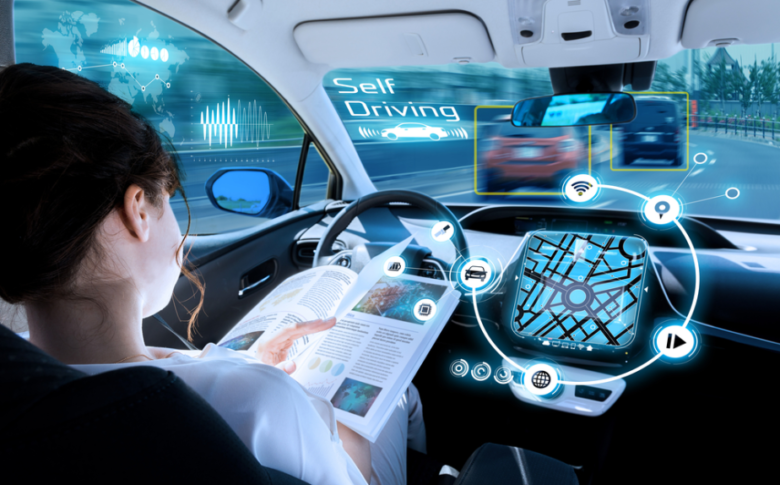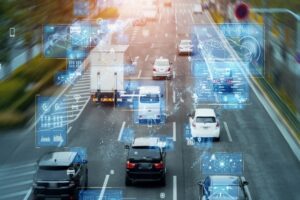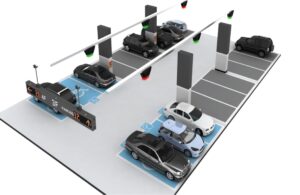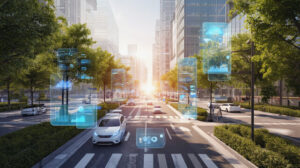One of the primary questions regarding vehicle automation is whether self-driving cars are safer than human drivers. Although software glitches and ethical quandaries do occur with both types of driving technologies, human drivers remain relatively secure. Autonomous vehicles are designed to eliminate human error, which accounts for 94% of traffic accidents. Their faster response time translates to reduced collisions and insurance claims as well as less operational disruption for companies that integrate these vehicles into their fleets.
1. Faster Reaction Time
Autonomous vehicles react faster than human drivers, enabling them to quickly identify and address hazards on the road. Their quick response can help avoid accidents by maintaining a safe following distance and avoiding sudden stops or sudden brakes.
Autonomous vehicles (AVs) feature more precise sensors that enable them to observe and interpret driving situations more precisely than human drivers, helping reduce errors such as failing to follow traffic laws or anticipate aggressive maneuvers that lead to rear-end collisions. Still, many consumers remain wary of autonomous cars; they worry that these machines may make unforeseeable errors or be vulnerable to hacking attacks.
2. Reduced Accident Risks
Autonomous cars could eliminate up to 90 percent of crashes, saving billions in healthcare costs, vehicle repairs, and lost productivity—making this an enormous boon for commuters, businesses, and insurers alike. Human drivers, on the other hand, may be reluctant to let go of control of their car’s direction entirely; even though a self-driving car may statistically be safer, people may still worry about software bugs or hardware failures that could cause accidents.
Studies show that advanced driving systems reduce the chances of rear-end, head-on, and lateral collisions and running off the road by 20-50%. They’re even two to five times safer in low-visibility conditions, such as dawn/dusk or turning situations.
3. More Convenient
Although autonomous vehicles eliminate the need for human drivers, they do not ensure complete risk mitigation. Programmable responses exist but cannot replace instinct or logic in decision-making processes. Consumers continue to demonstrate an enthusiasm for automation, prompting automakers to expand their ADAS offerings and accelerate the transition toward fully self-driving vehicles.
These vehicles do not include traditional driver controls and tend to be more expensive than current automobiles; however, their potential advantages could be substantial:Reduced traffic accidents, reduced car ownership/use, automated logistics including deliveries made more efficiently, reduced noise and air pollution, and improved livability through reduced noise pollution and air quality pollution reductions.
4. Less Environmental Impact
Human drivers tend to be relatively safe if they’re not impaired, worn out, or distracted; however, those on the “edge cases” often cause fatal accidents on roads. Autonomous cars eliminate much of the risk associated with driving by eliminating factors that lead to crashes, such as alcohol consumption, speeding, and fatigue—potentially saving over 18,000 lives each year.
But what are the other environmental implications of autonomous cars? Will they encourage more driving, leading to an increase in congestion and pollution? Studies have indicated that when given access to an autonomous car, households shift away from public transit, ride-hailing services, and walking trips for trips.
5. Increased Productivity
Despite the apparent safety benefits of an autonomous car without a human driver, it’s crucial to consider other factors. Human drivers have the advantage of making instant judgment calls based on subtle cues from pedestrians and other drivers, but self-driving cars lack this capability due to not being able to read body language or predict drivers’ behaviors.
These conditions can lead to dangerous situations, including rear-end collisions with unpredictable humans or sudden changes in traffic conditions, which autonomous vehicles could help mitigate. They provide significant safety advantages that benefit businesses that rely on fleets for ridesharing, deliveries, and corporate travel services.
6. Less Liability
Car accidents represent a considerable financial drain for the U.S. economy, racking up hundreds of billions in medical bills, property damage repairs, and long-term care for injured survivors. Fully autonomous vehicles could help lower these costs by eliminating human error as a source of car crashes.
Many believe computer drivers will be safer than human drivers, but this may not always be the case. Without being programmed to avoid getting drunk or distracted, software could still face similar difficulties as human drivers: visual manipulation (such as defaced stop signs), misperceptions, and skill degradation over time.
7. Reduced Traffic Congestion
Government data shows that driver error accounts for 94% of accidents. Autonomous cars offer significant benefits in this regard by decreasing rear-end collisions, head-on crashes, and running off roads by 20%-50%.
AVs are built to map their environment using sensors located throughout the vehicle. In addition, AVs rely on radar, video cameras, lasers, and other technologies such as reading signs or tracking vehicles or pedestrians using radar technology and tracking radar technology. According to research from Waymo, fully autonomous cars have had fewer accidents than human drivers but still must learn how to deal with unpredictable human behaviors on the road.
8. Less Distraction
Self-driving cars offer many advantages over human drivers when it comes to staying focused on the road without becoming angry or distracted due to things like drunk/drug driving or fatigue. This prevents lapses in attention, fatigue, and impaired judgment, which have been known to contribute to many collisions.
Waymo fleet vehicles experience significantly fewer police-reported accidents per million miles traveled compared with vehicles driven by humans, including all crashes from minor fender-benders to serious incidents. Furthermore, drowsy driving—which accounts for 20% of fatal collisions—has been eliminated. This is critical, as fatigued driving often takes the form of gradual reactions, which slow response time and impair judgment.
9. More Trust
Though autonomous cars are vastly safer than their human-driven counterparts, some people remain wary due to concerns over control and software glitches that might arise with autonomous driving cars. These fears stem from a limited knowledge of how autonomous vehicles function; for instance, they could still cause accidents when encountering unexpected pedestrians or human drivers.
Accidents don’t result from system failure alone; rather, they’re caused by human error such as drowsy driving—an invisible killer that autonomous cars are uniquely equipped to avoid. This safety advantage represents an invaluable competitive edge for companies using fleets of autonomous vehicles to transport employees and cargo.




